Papers by Michael Alexander Speidel
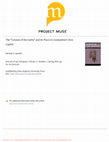
Journal of Late Antiquity 17.1, 94-116, 2024
The column monument in Istanbul’s Gülhane Park, commonly known by its colloquial name “column of ... more The column monument in Istanbul’s Gülhane Park, commonly known by its colloquial name “column of the Goths,” bears a well-known inscription on its pedestal which states that this monument was dedicated to Fortuna Redux on the occasion of a Roman victory over the Goths. The monument, however, has not attracted much scholarly attention, probably because no consensus has yet been reached regarding its date. An inspection of the inscription in Gülhane Park and a fresh analysis of its text suggest that the emperor Constantine erected the “column of the Goths” in the context of the formal dedication of his new capital in 330 as a memorial for his victory over the Goths in 328 or 329. The monument highlights Constantinople’s extraordinary political nature as more than just another imperial residence in the style of the tetrarchy. It bears witness to the emperor’s efforts to give Constantinople the status of a second Rome as well as his determination, above all else, to establish his city as the home of triumphant victories. Moreover, the monument’s dedication to Fortuna Redux, is another token of Constantine’s at least partially ambiguous religious policy, which allowed traditional symbols to be visible in his new capital of Constantinople.
L'épigraphie au XXIe siècle. Actes du XVIe congrès international d'épigraphie grecque et latine bordeaux, 29 août-02 septembre 2022. Edited by P. Fröhlich and M. Navarro Caballero , 2024
In the first part I discuss the many reasons why it does not make sense to establish a new epigra... more In the first part I discuss the many reasons why it does not make sense to establish a new epigraphic category named “inscriptions des frontières” in the same way that previously such categories as "milestones", "military diplomas", or "carmina epigraphica" were established. Inscriptions from the frontier regions are the objects of study rather than an epigraphic category. In the second part, Livio Zerbini discusses epigraphic finds from the Danube provinces.
Archäologisches Korrespondenzblatt 51, 2021
The names of two individuals have recently been read in an inscription on a plumb-bob found in Co... more The names of two individuals have recently been read in an inscription on a plumb-bob found in Cologne: the commander of a centuria, and a mensor. Based on the name of the centurion, a Jewish origin was inferred for the mensor. This interpretation is untenable because, as far as currently known, Jews did not serve in the Roman army during the first three centuries. But a new reading reveals that in fact only one person is named in the inscription, a Maenius Leubo, who commanded the centuria which owned the plumb-bob. The cognomen of the centurion points to his Gallo-Germanic origin.
W. Eck, F. Santangelo, K. Vössing (eds.), Emperor, Army, and Society, Studies in Roman Imperial History for Anthony R. Birley, Bonn., 2022
This contribution discusses the date and the circumstances of the official beginning of Caracalla... more This contribution discusses the date and the circumstances of the official beginning of Caracalla's Parthian war, his alleged Alexandermania and local reactions to the emperor's style and appearance.
EDCS-Journal Open Peer-Reviewed Online Journal on the basis of EDCS Epigraphik-Datenbank Clauss / Slaby, 2023
Did the Roman legions entertain spy posts on the Tigris river (and other far away locations beyon... more Did the Roman legions entertain spy posts on the Tigris river (and other far away locations beyond provincial territory)? A Latin inscription that has been claimed to prove such a practice cannot be taken as reliable evidence and may perhaps never even have existed.

A. Mullen (ed.), Social Factors in the Latinization of the Roman West. Oxford University Press., 2023
Although this chapter, contrary to some recently expressed views, accepts that Latin was the offi... more Although this chapter, contrary to some recently expressed views, accepts that Latin was the official language of the Roman army, it challenges the common view that soldiers and veterans were key vectors of linguistic change in the provinces of the Roman Empire. The argument is based mainly on the demographic realities in the provinces, in which, numerically, soldiers and veterans made up far too small a proportion of the population to have had a notable impact on the spreading of Latin into non-Latin-speaking communities. Moreover, at the level of the rank and file, service in the army required only a basic knowledge of Latin. Non-native speakers of Latin therefore needed to acquire advanced levels of the language of the Romans only if they intended to advance to higher ranks. Finally, a significant number of auxiliary veterans returned to their former homes after discharge and used their native tongue when communicating with the local population. Hence, such veterans hardly contributed to the diffusion of Latin in the provinces. The Roman army, therefore, does not emerge as a major agent in the spreading of Latin in the Western provinces.
M. Dana (ed), La correspondance privée dans la Méditerranée antique : sociétés en miroir, 2023
The immense importance which letters played in the Roman army has as yet, perhaps, not been fully... more The immense importance which letters played in the Roman army has as yet, perhaps, not been fully appreciated, as no full study of all of the extant material currently exists. The present contribution discusses a variety of examples of Roman soldiers’ letters to highlight a few major characteristics that set them apart from their modern counterparts and that made them the single most important means – next to the weaponry – to secure the Roman army’s survival and success. Without letters, official and private, the Roman army simply could not have functioned. Remarkably, however, the surviving letters of Roman soldiers provide only very limited insight into the experience of combat and war in the Roman army.
Heródoto: Revista do Grupo de Estudos e Pesquisas sobre a Antiguidade Clássica e suas Conexões Afro-asiáticas, 2019
This paper discusses various aspects of the transmission of information between the two great emp... more This paper discusses various aspects of the transmission of information between the two great empires of ancient China and Rome.
Inschriften Edieren und Kommentieren, 99-113, 2022
This essay (in German) provides a short overview of the different types of wax-coated wooden writ... more This essay (in German) provides a short overview of the different types of wax-coated wooden writing-tablets and their wide-spread use for innumerable purposes the Roman World. It also describes the methods used (and difficulties encountered) when trying to decipher and edit the remains of the texts these tablets once contained (including the story of a disappeared ox).
ZPE, 2021
This paper presents recent finds as well as revised readings of stamped tiles from the Roman fort... more This paper presents recent finds as well as revised readings of stamped tiles from the Roman fortress of Apsaros in modern Georgia.
ECONOMIA E FRONTIERA NELL'IMPERO ROM ANO - Collana di studi e testi per la storia economica, sociale e amministrativa del mondo antico diretta da Elio Lo Cascio , 2021
As a consequence of Trajan’s military occupation of Nabataea in 106 CE, the former Late Hellenist... more As a consequence of Trajan’s military occupation of Nabataea in 106 CE, the former Late Hellenistic kingdom was turned into a Roman province and received a permanent garrison of Roman troops. Archaeological and epigraphic finds from recent years shed new light on the economic and military developments which occurred as a consequence of the Roman provincialisation as well as Rome’s military and economic interests in the frontier zones of the kingdom of Nabataea and provincia Arabia.
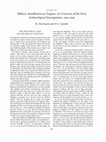
The euphrates marked most of rome’s eastern frontier, and it divided the empire’s territory from ... more The euphrates marked most of rome’s eastern frontier, and it divided the empire’s territory from the spheres of influence of rome’s most resourceful foes, the parthians and persians (fig. 1).1 The river marked the border between the two foremost empires of the ancient world,2 and, for the many different peoples of this frontier zone, it made a true difference on which side of the border they lived.3 The defense of rome’s eastern frontier was the task of soldiers. Their duties were of such proportions that the defense of this border consumed about one quarter of rome’s entire military force. The impact of the roman army in this area, however, was not limited to its vital function of preserving roman law and order. The roman army also played a major role in the thriving economy of the eastern provinces and, amongst other things, furthered the spread of christianity. The armed forces thus strongly participated in shaping the culture, the economy, the infrastructure, the landscape, and ...
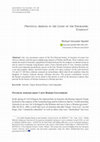
Electrum 28: 135–150, 2021
One very prominent context of the Pre-Christian history of Armenia of course lies with its relati... more One very prominent context of the Pre-Christian history of Armenia of course lies with its relations with the great neighbouring empires of Parthia and Rome. These relations were mainly the result of Armenia's geopolitical location between the two empires, its natural resources and its control of strategic long-distance routes. From a Roman point of view, Armenia certainly was the most important geopolitical concern in the East. Roman-Armenian relations therefore are a vast and complex subject, and their history extends over many centuries. In the years between 114 and 117 AD these relations assumed an extraordinary albeit short-lived condition when the kingdom of Greater Armenia became a Roman province. The present contribution reviews the Roman inscriptions that can be dated to this period, as well as the historical evidence they provide for the history of Greater Armenia as a Roman province.
EDCS-Journal, 2021
A Latin inscription discovered in 1996 in the amphitheater of the ancient colonia Iulia equestris... more A Latin inscription discovered in 1996 in the amphitheater of the ancient colonia Iulia equestris (Nyon, Switzerland) reveals, among other things, the enigmatic rank of an interrex legionis. The present contribution proposes an explanation.
C. Wolff / P. Faure (eds.), Corps du chef et gardes du corps dans l’armée romaine, 2020
On 8. April 217, during his expeditio felicissima orientalis, the emperor Caracalla left the town... more On 8. April 217, during his expeditio felicissima orientalis, the emperor Caracalla left the town of Edessa in northern Mesopotamia (modern Şanlıurfa) together with a military escort of soldiers, officers and high-ranking equestrian commanders. Caracalla would never arrive. He was assassinated halfway there, in the midst of his 'protectores' while alleviating himself. 'Protectores' are not heard of before this event but are a well-known elevated rank in the Roman army in later years. Yet who Who were Caracalla’s ineffective protectors? How could such a disastrous blunder happen in the midst of Rome’s most carefully selected, best equipped and most thoroughly trained soldiers of the imperial guard?
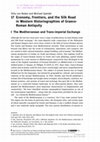
S. von Reden (ed.), Handbook of Ancient Afro-Eurasian Economies, Vol 1., 693-727, 2020
Although the last few years have seen a surge of publications on Indo-Roman trade and Silk Road e... more Although the last few years have seen a surge of publications on Indo-Roman trade and Silk Road exchange, the trans-imperial trade connections of the Hellenistic and Roman Empires have never been central to the field of Graeco-Roman history. The Greeks and Romans were Mediterranean societies. Their involvement in Asia beyond Asia Minor was the result of colonization, annexation, and conquest, but not central to their cultural formation, empire building, and economy. The Mediterranean perspective of studies on Greek and Roman culture, that explains itself by the origin of Graeco-Roman history in Greek and Latin philology, gained further momentum by a new interest in Mediterranean connectivity that developed in the wake of the English translation of Fernand Braudel's La Méditerranée et le monde méditerranéen à l'époque de Philippe II (1949) in 1972. Since then, Graeco-Roman culture and economy could be even more convincingly, and more comprehensively, located in the Mediterranean Basin. The subject of ancient history was no longer defined just by the languages, but instead by geographical, cultural, and economic cohesion of the ancient Mediterranean. The present contribution provides an overview of the modern historiography of imperial frontiers and their role in trans-imperial exchange.
ZPE 217, 238-246, 2021
This contribution proposes a new reading of a Latin graffito scratched onto a stone and found on ... more This contribution proposes a new reading of a Latin graffito scratched onto a stone and found on the Septimer pass in Switzerland. It reveals the name of a soldier of the 12th legion and allows further investigations into the history of this legion and Augustus' campaigns into the alpine valleys in 6-4 BC.
Domi militiaeque Militär-und andere Altertümer Festschrift für Hannsjörg Ubl zum 85. Geburtstag Herausgegeben von Günther E. Thüry, 2020
A second century Latin inscription from Cologne (CIL XIII 8213) refers to a Roman military expedi... more A second century Latin inscription from Cologne (CIL XIII 8213) refers to a Roman military expedition to the region of the Caucasus mountains and the Alutus river. The present contribution discusses this inscription and its meaning as a source for Roman military interventions (particularly during the Parthian War of Marcus Aurelius and Lucius Verus) to the South Caucasus.
JRA Suppl 51, 2003
History, Archaeology, Epigraphy
W. Aylward (ed.), Excavations at Zeugma conducted by Oxford Archaeology, 2013
This contribution presents an overview of the Swiss Archaeological Investigations in the years fr... more This contribution presents an overview of the Swiss Archaeological Investigations in the years from 2001 to 2003.
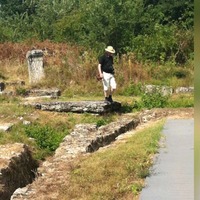










Uploads
Papers by Michael Alexander Speidel
Teil II umfasst Aufsätze zu wichtigen Inschriften und zu übergreifenden Themen der Augster Epigraphik.
--------------------------------
Tituli Rauracenses I is designed as two-part anthology. In part I all known testimonia concerning the antique and early medieval name of modern-day Augst and Kaiseraugt are presented. Appendices A, B, C and D are concerned with the inscription formerly known as “Nuncupator” inscription. In appendix E an account of the discovery and findings ofthe Anonius Pius milestone found by Hans Sütterlin in 1995 in Augst is given. This inscription also mentions the caput coloniae or caput viae.
Part II is comprised of essays on inscriptions of significance to as well as overarching themes in the epigraphy of Augst.
Fundumstände, Fundgeschichte und Verpackung, die neuen Objekte, Funktion, Die Prunkplatten und ihr Bildschmuck, Besitzer und Entstehung des Schatzes, Zeitstellung und Ursachen der Deponierung, Bedeutung, Ausblick und offene Fragen.
--------------------------------
Re- and new interpretation of the Kaiseraugst silver treasure. A good thirty years after the discovery of the Kaiseraugst silver treasure, a collection of 18 platters, bowls and large dishes, which had been concealed at the time, found their way back into the public domain through a private legacy. These newly recovered objects not only represent a formal and artistic enrichment of the silver treasure, but over and above they open up new aspects on important points for a new understanding the treasure as a whole. In this study the authors have used the opportunity to look beyond a simple presentation of the objects and evaluate the significance of the treasure as a whole, and in the context of the history of late antique silver. The results can be summarized as follows:
Circumstances, history and packing of the finds; the new silver objects; function; the ceremonial dishes and their pictorial decoration; the owners and origins of the treasure; the timing of and reasons for its burial; significance, perspectives and open questions.